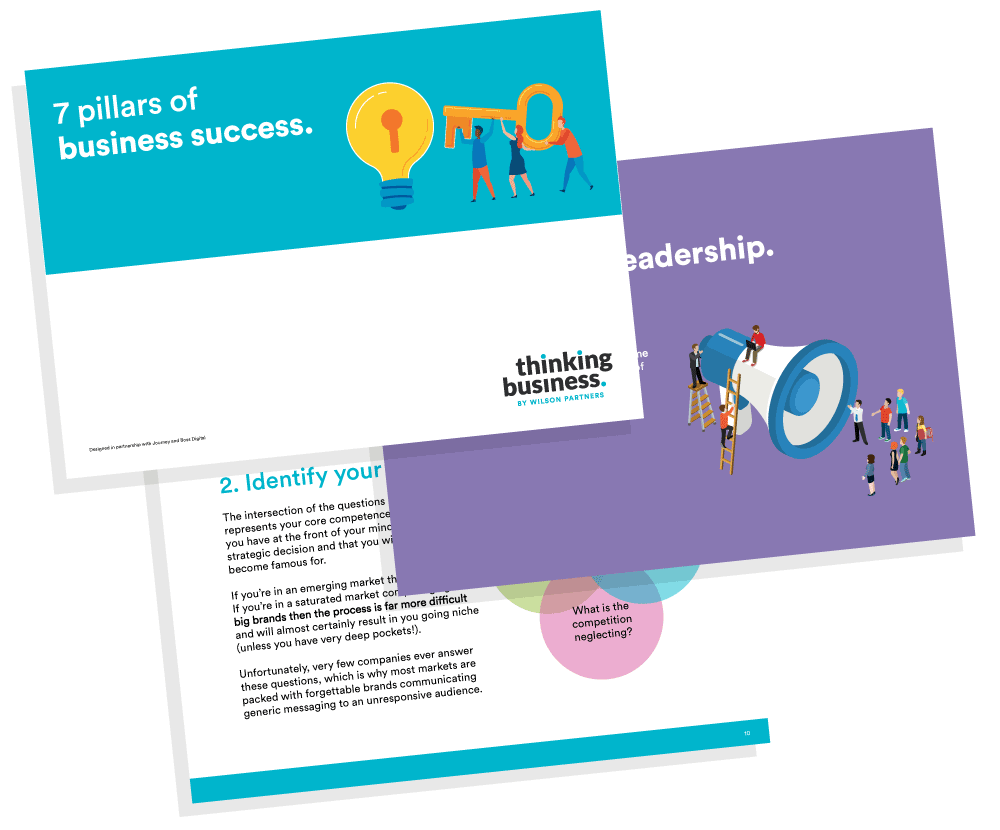
Six ways to prevent negative conflict in the boardroom
Chairing a board meeting can be challenging, and conflicts or disagreements can quickly escalate if they’re not managed properly. In the right circumstances however, conflict can be a good thing! I like to see people being challenged; as long as they’re being challenged with the best intent. There are a number of reasons why bad conflict can arise in the boardroom, here are 6 ways to prevent it:
1. Leave your personal agendas and vendettas outside the boardroom
An issue often arises when a Chief Executive comes into a boardroom wanting to have a conversation about some of their ‘blue sky thinking’. As soon as they start talking about strategy (something that they should be spending 20-30% of their time on), the people that aren’t strategic immediately think about how this idea will affect them personally.
Providing everyone in the room is well-informed, I would hope that they bring their commercial and business acumen to the meeting, rather than any personal agendas or vendettas. So when a Chief Executive introduces one of these ideas, board members should first and foremost think about the impact of this idea on the business, not how it will affect them personally. Approaching these conversations this way will help to reduce bad conflict.
2. Manage personalities effectively
Personalities can also cause conflict. Look around your boardroom for your ‘mavericks’ and your ‘energy sappers’. You will almost always have both types of personalities in the room, both of which have to be managed. The ‘energy sapper’ is a bit like what the Israelis call the ‘Tenth Man’ – the person with the responsibility of saying “But…”, “What if…”, “How about…” whenever someone introduces a new idea. Challenging ideas in this way is often very valuable, and one of the roles of a good Chairperson is to effectively manage and facilitate these conversations.
It’s therefore critical to understand the personalities around the board table. You’ll need to manage the people who really want to talk. I’ll often say, “Thanks very much John, I’ve heard a lot of what you’ve said but actually I really want to hear from Amelia now, because she hasn’t really said anything”. Those people that speak least can often have the greatest impact, because when they do speak, everybody listens. When you understand the personalities, you can use them to stimulate conversation and healthy debate.
3. Utilise the ‘wisdom of the crowd’
The meeting doesn’t have to be chaired by the Chief Executive of the business; in fact they often have a much freer rein when they’re not required to act as Chair. The Chairman’s main role is to promote discussion and dialogue and ensure everyone gets their fair share of time to speak. When a Chief Executive also acts as Chair, it can sometimes turn into their show. The danger then is that everyone else in the room goes into autopilot and thinks, ‘I’ll just listen and do what this person says’.
When someone like myself chairs a board meeting, it gives the Chief Executive the freedom to speak about what they think is important. Something I say on a regular basis is, “Thank you Jane, we’ve heard what you’ve got to say, now can I hear from the Sales/Finance/HR director?” That gives everyone a fair opportunity to speak, and hopefully then you get what I would classify as the wisdom of the crowd, rather than the wisdom of one; and we all know you usually get a lot more out of a team that is well-managed.
4. Clarify roles and responsibilities before the meeting
Be crystal clear about the roles and responsibilities of the people on the board. Conflict can easily arise when you have people sat around the table that don’t know why they are there – because nobody’s told them! Speak to all of the directors about what you expect from them, for example, “As Sales Director I expect you to be coming up with the sales plan and to be factoring that into the overall business plan.” Everyone has a part to play in a well-managed board meeting – the person putting one part of the plan together (e.g. the Sales Director) is there to have it critiqued by the rest of the board. It’s essential for everyone at the meeting to look at the business holistically, not just the Chief Executive and the Chair.
5. Give everybody the opportunity to come well-prepared
Preparation is everything. You should give everybody the opportunity to come well-prepared, particularly in their key areas. This is achieved through talking to people beforehand and saying, “We’ve got the board meeting coming up, I’d really like to hear from you about x, y and z so I need you to go away and think about that and I’ll allocate 15 minutes of the meeting for you to present this information. It will be in the agenda, so people will know that this is something you’re going to come and speak about.”
If the Managing Partner in a professional firm is very client-facing, often they aren’t spending enough time on strategy or ensuring that the people on their board are well-prepared for the meeting. People shouldn’t be rocking up every month thinking ‘It’s the board meeting again, we get tea and coffee and some biscuits and we have to listen to the Chief Executive’. Everyone has their part to play in an effective Board Meeting.
6. Focus on the future
Circulate the historic information beforehand so that people come well prepared to have a conversation about the actions which should be taken as a result of that performance. That way people can be challenged on what’s happened in the last month. If you don’t do this, you end up spending 80-90% of the meeting talking about what’s already happened!
Everybody who attends a board meeting should prepare a report in advance and circulate it to the remainder of the board as part of the board pack. It’s usually the Chief Executive’s responsibility to put this pack together, usually 3-4 days before the board meeting. This provides everyone with the opportunity to read through the papers and arrive ready for a conversation (led by the Chair).
It’s essential for everyone at the meeting to understand that they’re not just there to report on the numbers for the previous month or what they’ve already done, they’re there to make essential decisions about the future of the business.
Event
Webinar – Changes to the UK Trust Registration Service, May ’22
A short webinar and Q&A session with our Trust specialists Jodie Green and Sara Pedrotti. You can view the video and download the presentation here.

Download our free guide to the 7 pillars of business success
Read our free guide what you need to focus on to help you make better decisions and achieve your goals quicker.
Please complete our form to download the guide.
Sign up to receive alerts
Call us on 01628 770 770 for a no-obligation chat
You may also be interested in...
Your tax allowances for 2024/25
With the new tax year in full swing, make sure you're aware of the tax allowances for 2024/2025! Pension annual allowance The pension allowance…
Meet the team in 90 seconds – Lesley Kibble
Introduce yourself Hi, I'm Lesley, outside of work I love to travel with my partner Lee and visit new places. I recently returned from Krakow, Poland…
Seeking investment: What a Private Equity investor looks for
What a Private Equity investor looks for Private equity investment is a fundamental source of business funding that plays a pivotal role in…




